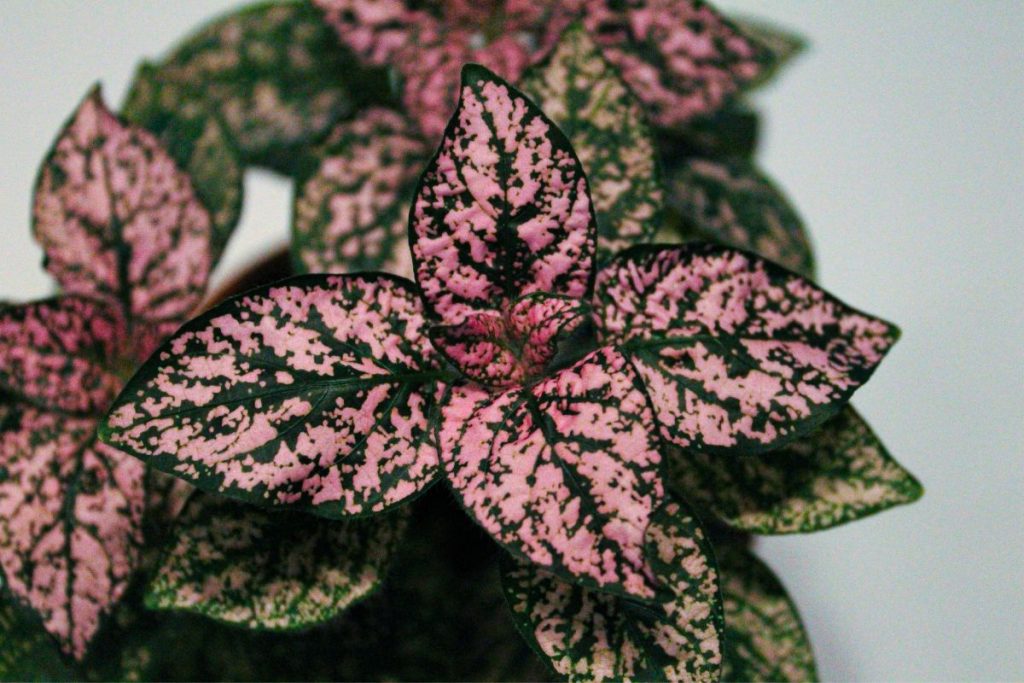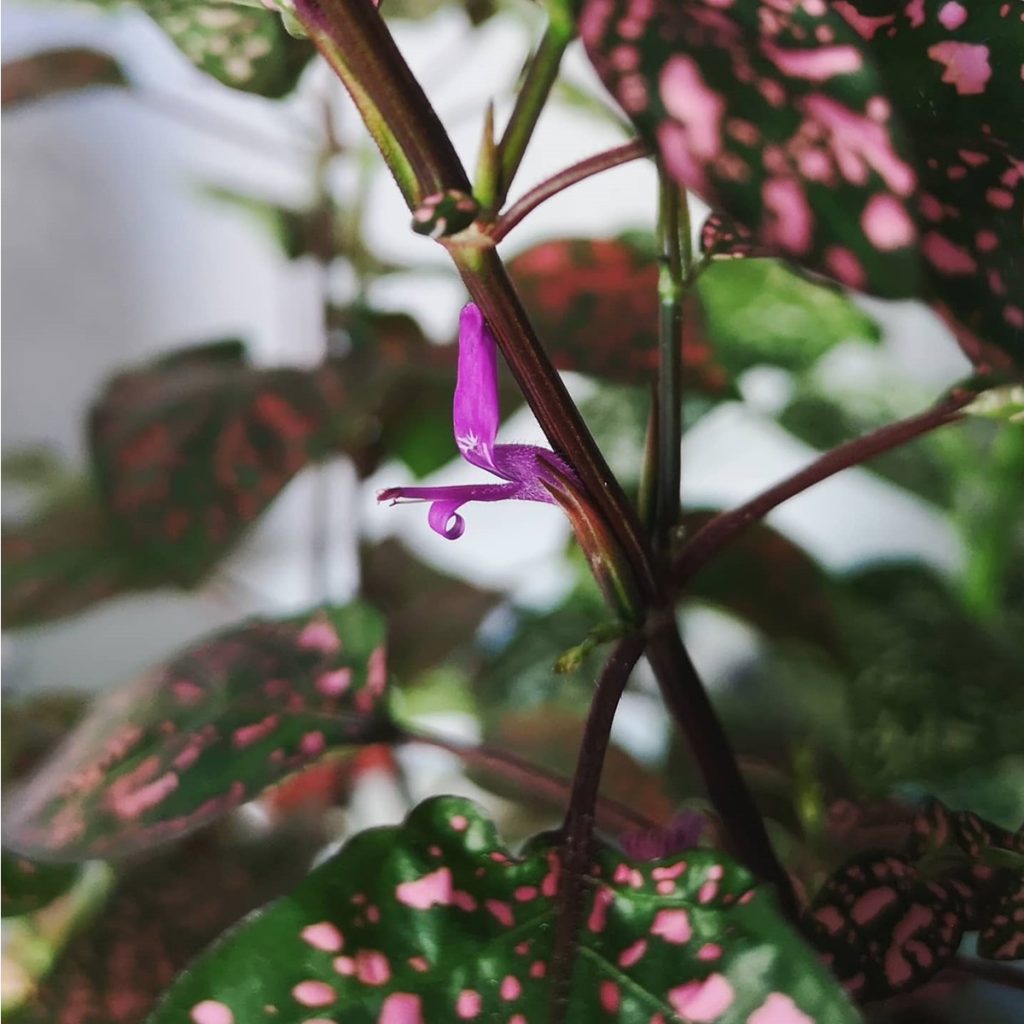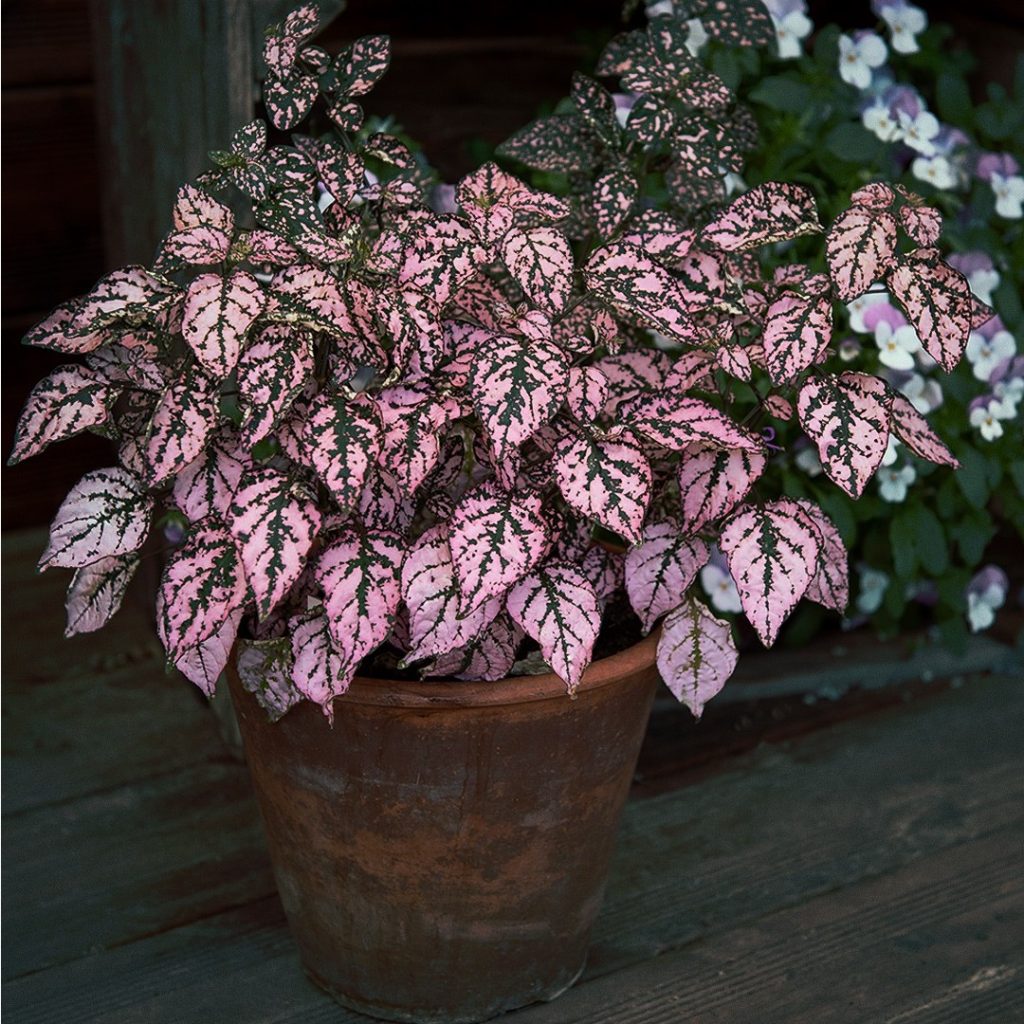Do you have a Polka Dot Plant in your home? If so, you may be wondering how long it will live. Unfortunately, Polka Dot Plants have a short lifespan, but there are steps you can take to extend it. In this article, we’ll look at the life cycle of a Polka Dot Plant, why they have a short lifespan, and how to extend it. Read on to learn more.

Contents
- 1 How Long Do Polka Dot Plants Live?
- 2 How To Extend A Polka Dot Plant’s Lifespan
- 2.1 1. Prune the Flowers
- 2.2 2. Grow it Indoors
- 2.3 3. Maintain Warm Temperatures
- 2.4 4. Maintain High Humidity
- 2.5 5. Provide Sufficient Light
- 2.6 6. Water Frequently
- 2.7 7. Fertilize Regularly
- 2.8 8. Keep Pests at Bay
- 2.9 9. Overwinter Your Polka Dot Plants Indoors
- 2.10 10. Propagate the Plants Before They Die
- 3 Life Cycle Of A Polka Dot Plant
- 4 Why Do Polka Dot Plants Die Quickly?
- 5 Conclusion
How Long Do Polka Dot Plants Live?
Living up to two years, depending on the growing climate, polka dot plants can provide you with a splash of color. If grown outdoors in USDA Zones 3-10, they will display annual characteristics, dying off at the end of their life cycle. However, if grown indoors, they can survive as perennials.
To prolong their lifespan, prune off any flowers as this will send the nutrients to the foliage. Unfortunately, the plants won’t grow over two years, unless they are grown in their natural habitats. In tropical climates like Madagascar, they can wake up after a period of dormancy in the cold season and propagate. But in temperate climates, the plants won’t survive without proper care and they will die just after two years.
How To Extend A Polka Dot Plant’s Lifespan
If you want your polka dot plant to live longer, you need to prune its flowers, grow it indoors, maintain warm temperatures and high humidity, and provide sufficient light. These steps will help you extend its lifespan.
1. Prune the Flowers

You can extend a polka dot plant’s lifespan by pruning its flowers; it’s easy to do with your hands or a clean tool. Remove the flowers as soon as they start growing, and avoid leaving a flower on the plant for more than one day. Pruning prevents the plant from going into seed production, which will help it stay alive for a longer period of time. When using a tool, make sure it is clean and free from any dirt or debris that could introduce microbes to the plant. This will help prevent any infections or diseases from spreading. With proper pruning, you can extend the life of your polka dot plants and enjoy their beauty for a longer time.
2. Grow it Indoors
Once you’ve pruned the flowers, one of the most effective ways to extend the lifespan of your polka dot plant is to grow it indoors. Indoor conditions are much more stable than outdoor temperatures, making it easier for the plant to survive the winter. The best way to do this is to find a place with relatively high and stable temperatures. This could be anywhere from a sunny windowsill to a warm, dry room. If you have a greenhouse, that’s even better. Just make sure the temperature doesn’t drop too low.
3. Maintain Warm Temperatures
To extend the lifespan of your polka dot plant, maintain warm temperatures of between 60 to 80 degrees Fahrenheit. Growing your plant in a controlled greenhouse, indoors, or in any place with warm temperatures can help keep the temperature stable. This is especially important during the winter months when temperatures should remain high and consistent.
If you want your polka dot plant to continue growing, you can increase the temperature slightly above 80 degrees Fahrenheit. Make sure to monitor the temperature regularly and be aware of any sudden changes. Taking these steps will help your plant live longer and healthier.
4. Maintain High Humidity
Keep your polka dot plant’s humidity levels high to extend its lifespan – aim for at least 60%. Humidity helps regulate water intake and transpiration and helps the plant survive winter. A hygrometer can measure humidity levels in the room. If the level is lower than 60%, a humidifier can be used to increase the moisture in the air.
Alternatively, you can place a water reservoir near the plant or mist it with water. Don’t forget to clean the leaves of your plant regularly as dust and dirt can block the pores and reduce the humidity. Keep an eye on the humidity level and adjust accordingly to ensure the health of your polka dot plant.
5. Provide Sufficient Light

By providing your polka dot plant with enough light, you can help extend its lifespan. Direct sunlight is ideal and should be provided for at least six hours a day. If you’re growing it indoors, position the plant near a window. Too little light can cause the leaves to turn yellow and eventually die.
If the plant does not receive enough sunlight, you can supplement its light exposure with a grow light. For optimal results, turn the grow light on for 12-14 hours a day. Remember to also rotate the plant periodically to ensure it gets light from all directions. Providing your polka dot plant with the right amount of light is essential for its longevity.
6. Water Frequently
Water your polka dot plant at least every two days to help extend its lifespan. Polka dot plants thrive in moist soil, so make sure that you don’t let the soil dry out. Check it regularly, and if it’s dry, water it immediately.
Overwatering can be just as damaging as underwatering, so be careful not to give it too much. If the soil feels soggy, wait a few days before watering again. It’s important to find a balance between keeping the soil moist without making it too wet. With the right amount of water, your polka dot plant should reward you with a long life.
7. Fertilize Regularly
Regular fertilizing can help extend your polka dot plant’s lifespan. It’s important to feed your outdoor plants once a month with a general-purpose fertilizer. Indoor plants should be fed every week or two. Doing this will help ensure they receive essential nutrients for growth and will help keep them healthy.
Make sure to read and follow the instructions on the fertilizer packaging, as the amount used can vary depending on the type of plant. Additionally, be careful not to over-fertilize, as this can be damaging to the plants. Regular fertilizing can help keep your polka dot plants looking vibrant and healthy and can help ensure they can live a long and happy life.
8. Keep Pests at Bay
To keep your polka dot plant’s lifespan extended, you must prevent pests such as aphids, spider mites, beetles, and others from eating the leaves. Start by regularly inspecting your plant for signs of infestation, such as discolored or wilted leaves. If you notice any pests, treat the plant immediately with an insecticidal soap or other organic insecticide. You can also use beneficial insects such as ladybugs and lacewings, which will feed on the pests and keep them at bay.
Additionally, you can use companion planting to help keep pests away. Planting marigolds near your polka dot plant can help ward off beetles, while chives can help keep aphids away. Finally, use mulch to keep the soil moist and discourage pests from taking residence. With consistent and careful monitoring, you can help protect your polka dot plant and prolong its lifespan.
9. Overwinter Your Polka Dot Plants Indoors

By overwintering your polka dot plants indoors, you can extend their lifespan significantly. Bringing them inside during winter is the key to ensuring their well-being and prolonging their life. Before doing so, you must do some preparation.
Make sure you properly clean and disinfect pots and other containers that come in contact with the plants. Additionally, inspect them for pests and diseases. If you find any, treat them with an appropriate pesticide or fungicide. Prune off any dead or damaged parts of the plants and then repot them with fresh soil. Finally, give them plenty of water and place them in a spot with indirect sunlight. With these simple steps, you can help your polka dot plants live for years to come.
10. Propagate the Plants Before They Die
If you want to extend the lifespan of your polka dot plants, propagating them before they die is the best way to do so. The easiest way to do this is by planting their fertile seeds. However, if you don’t want to go through this process, you can use stem cuttings.
Make sure the cuttings are at least 6 inches tall and have previously produced leaves. Plant the bottom part of the cutting in the soil and watch your plants multiply! This can help you have a steady supply of these beautiful plants without having to buy new ones. Be sure to provide adequate care for your propagated plants to ensure they stay healthy and alive.
Life Cycle Of A Polka Dot Plant
You may wonder how long a polka dot plant lives, and the answer is dependent on its life cycle. Starting with germination, the polka dot plant progresses through a vegetative phase, flowered and seed production, and ultimately its death. Understanding the life cycle of a polka dot plant will help you estimate its lifespan.
Germination
Once planted, polka dot plants begin to germinate, starting the life cycle of the plant. The embryo inside the seed starts to grow and you can tell that it has successfully germinated when the cotyledons appear from the soil. For plants propagated with stem cuttings, small shoots of roots appear before the leaves emerge. Cotyledons are the first leaves of a plant and do not look like other leaves. The life cycle of the polka dot plant will vary depending on the growing conditions, but they can typically live up to 3 years.
Vegetative Phase
After successful germination, polka dot plants enter the vegetative phase of their life cycle, which typically lasts for two to three years. During this phase, the plants focus their energy on producing leaves and petioles, while their stems thicken and grow. This is the time when you can enjoy the beauty of polka dot plants as they sprout more leaves with different patterns of dots. To ensure that the plants remain healthy, it’s important to provide them with enough sunlight, water, and nutrients. While this phase may last several years, it’s important to remember that the life span of polka dot plants is limited, so be sure to enjoy them while they last!
Flowering and Seed Production
Once you’ve enjoyed the beauty of your polka dot plants for a few years, it’s time to watch as they enter the next stage of their life cycle: flowering and seed production. In the late summer months, these plants produce non-showy and pink or blue flowers. Pollination of these flowers will result in seeds. After producing seeds, the polka dots will start to die off, with brown or yellow leaves appearing before winter. This signals the end of their life cycle. It’s important to be aware of this so that you can plan to replace your polka dot plants when the time comes.
Death
When it’s time, your polka dot plants will enter the final stage of their life cycle: death. Signs of a plant nearing the end of its life include leaves turning brown or yellow, halting of growth, and increased susceptibility to pests. If you notice these signs happening too suddenly, check the growing conditions of your plants to see if they are suitable. Death is a natural part of the life cycle of any plant and should not be feared. By taking good care of your polka dots, you can ensure that they live a long, healthy life before they reach the end.
Why Do Polka Dot Plants Die Quickly?
Although most polka dot plants can live for up to two years with proper care, they often die quickly due to various factors such as temperature changes, nutrient deficiency, lack of proper care, and their nature as tender perennials. Temperature plays a key role in the growth of any plant, and too much or too little can be detrimental. If temperatures drop after the flowering stage, the plant will go into dormancy and may not be able to recover.
Additionally, when plants are in the process of producing flowers and seeds, they expend a lot of energy and nutrients without getting anything back. This can lead to nutrient deficiency and quick death. Furthermore, if polka dot plants do not receive the required light, temperature, and humidity levels, they will not survive. Understanding the plant’s nature as a tender perennial is also important, as this means that it will die after completing its one-year life cycle. So, to ensure that your polka dot plants live as long as possible, provide them with the right growing conditions and regular care.
Related Posts:
Are Polka Dot Plants Toxic To Cats?
Are Polka Dot Plants Toxic To Dogs?
Conclusion
Polka dot plants are beautiful and interesting additions to any home. However, due to their short lifespan, they may not be the best choice for those looking for a long-term plant companion. With proper care and some luck, it is still possible to extend the life of your polka dot plant. Knowing the life cycle, what contributes to their short lifespan, and how to properly care for them can ensure your polka dot plant will be around for as long as possible.
